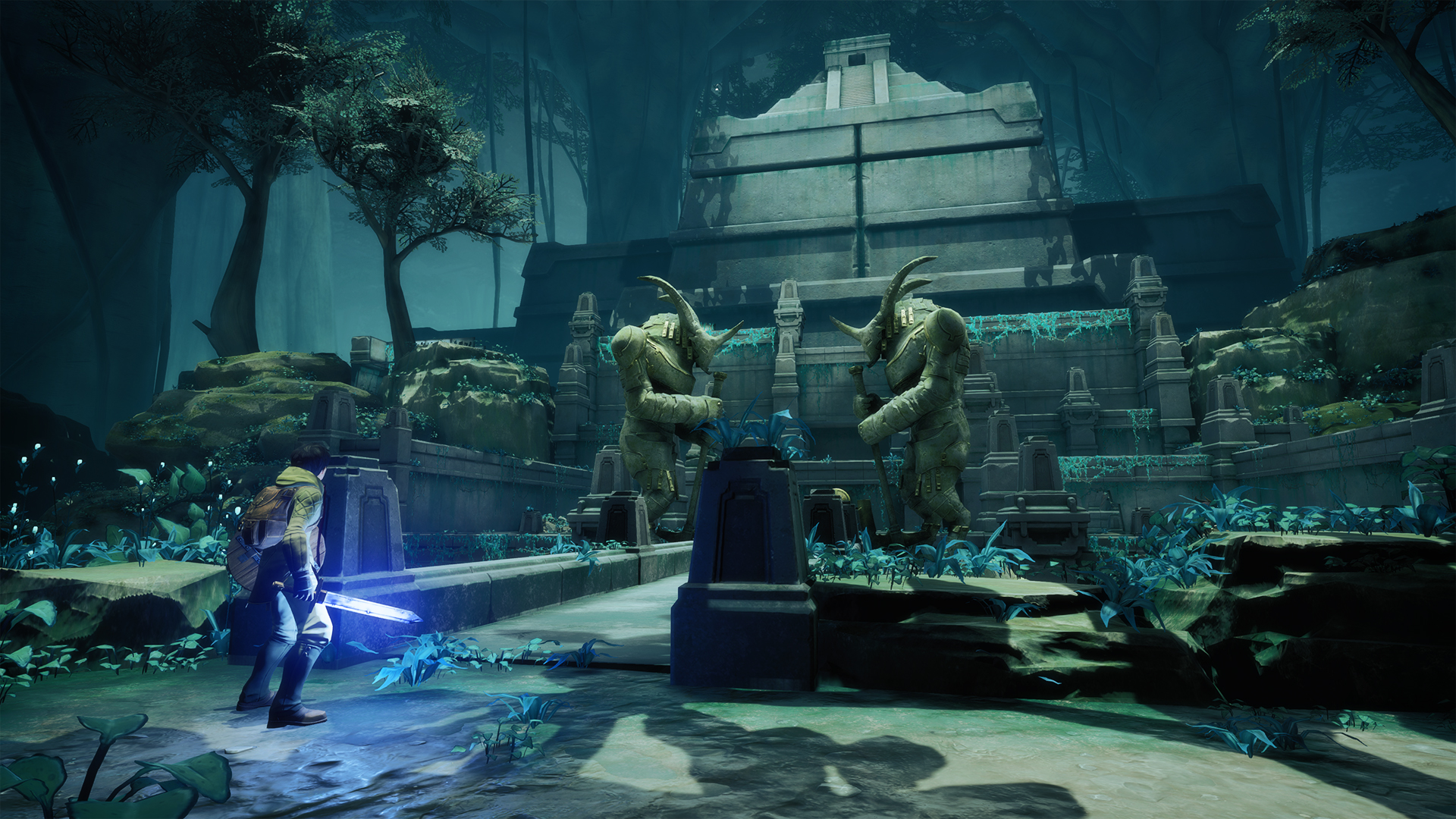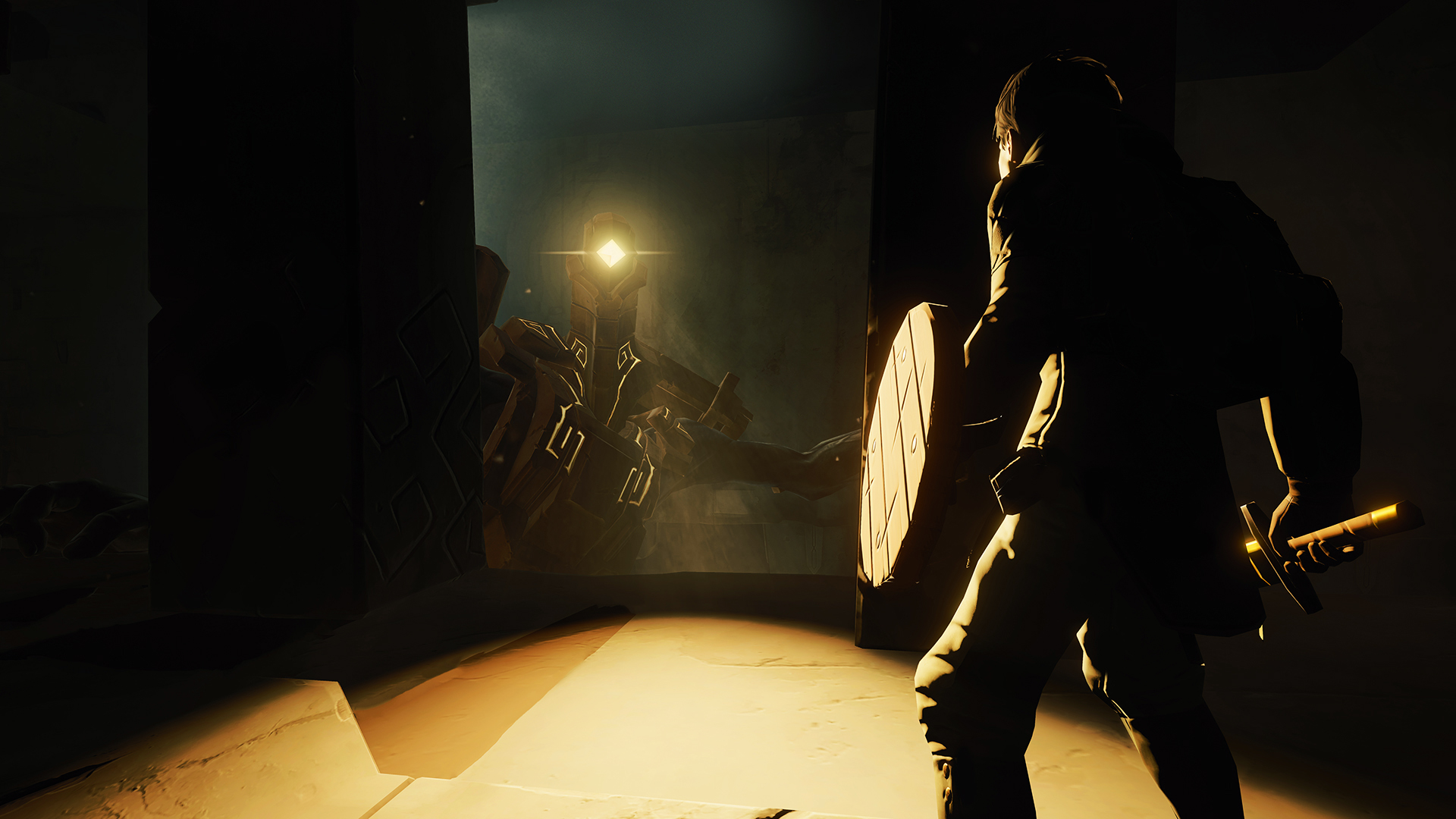Third-Person VR And A Fixed Camera Perspective: Hands-On With 'Chronos'
At last year’s E3, Lucky’s Tale showed that third-person gameplay in VR could be fun. Since then, a few games have also featured that third-person camera gameplay, including Gunfire Games’ Chronos, and we were finally able to play it for the first time, at the Oculus Content Showcase at GDC.
Once A Year
The story centers on your character, who is tasked with hunting down a dragon in the post-apocalyptic future. The path to the dragon’s lair is only open once a year. If you die, your character has to wait another year to attempt the same journey again. In addition, all enemies respawn, so you’ll have to go defeat any foe in your way (repeatedly), and you just have to try and stay alive for as long as possible.
Sounds familiar? It should be, at least for those acquainted with the Souls games developed by the team at From Software. Chronos utilizes the same death and rebirth mechanic from the Souls series, but it has some of its own RPG elements. Throughout the game, you’ll be able to increase certain attributes such as strength, defense, and magic.
It includes a variety of enemies such as goblins and stone giants. Shortcuts and collectibles are found throughout the world, and there’s even a small degree of puzzle-solving included. Over time, you obtain more powerful weapons and equipment before you encounter tougher enemies.
All in all, it sounds like a normal action RPG, yet it still manages to work in VR.
Always Watching
To prevent motion sickness, Chronos uses a single camera angle for the game. Every time you enter a new room or a certain section of the map, your camera just follows the character while it stays in a fixed position. The method seems outdated in this day and age, but it’s the best way to present the world.
In VR, the camera’s perspective is also used to see what’s around the next corner. For example, my character entered a forest level. The enemy’s houses were stacked on top of each other, high above the forest floor. As I approached a section of the map with a bridge, the game’s camera shifted to a new angle that allowed me to survey the area ahead, but to also provide some scale to show the immense trees that surrounded me.
Get Tom's Hardware's best news and in-depth reviews, straight to your inbox.
It's also used to find certain enemies. At one point in the game, I noticed a dark, unlit section of the area. My character was close to it, and in VR, I could lean forward and notice a pair of eyes staring back at me to indicate that an enemy was hiding in the shadows, waiting for the right time to ambush me. Another scenario showed an enemy waiting to pounce from a roof near the right corner of my peripheral vision. If the developer didn’t point it out to me, I wouldn’t have seen it until it attacked.
Using It To Your Advantage
What started out as a preventative measure for motion sickness turned into a useful mechanic for the game. With this fixed camera setup, Gunfire Games was able to not only show scale in its levels, but to also invite viewers to really pay attention to details. If this was made on traditional gaming platforms, then a third-person camera would have been the ideal camera setup. But in order to keep players immersed and comfortable for long gameplay hours, Chronos used an old-school mechanic to provide an unique VR experience. Just like Lucky’s Tale, this game is another proving point that third-person gameplay can work in virtual reality.
Follow Rexly Peñaflorida II @Heirdeux. Follow us @tomshardware, on Facebook and on Google+.
Rexly Peñaflorida is a freelance writer for Tom's Hardware covering topics such as computer hardware, video games, and general technology news.

